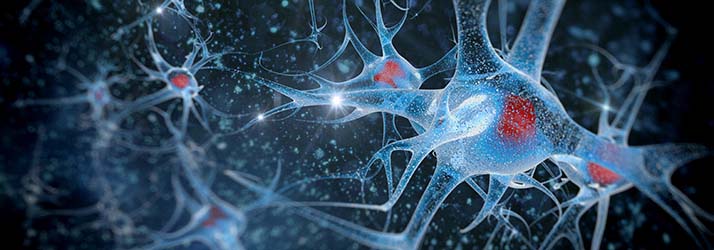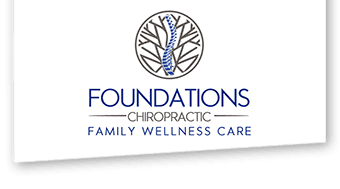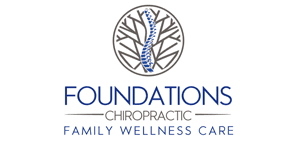Introduction To The Nervous System in Zionsville

What is the nervous system?
Most people in Zionsville understand that the nervous system is composed of your brain and all of the nerves in your body.
What a lot of people don't understand is how important the nervous system is for everything our body does and how much it is able to accomplish without us consciously thinking about it.
A Science Lesson on the Nervous System by a Zionsville Chiropractor
The nervous system is one of our favorite things to talk about, so we thought we'd dive into more detail and give you a little introduction to how it works. Buckle up!
There are two components that make up the structure of the nervous system which are the Central Nervous System (CNS) and the Peripheral Nervous System (PNS). The CNS is made up of our brain and our spinal cord. The PNS is made up of all of the nerves that come out of our spine/spinal cord that communicate with our muscles, organs, skin, glands, etc. and send information back to the spinal cord/brain. Think of the structures of the nervous system as highways that information travels on.
After you read this paragraph just take a second to close your eyes, breathe, block out any external distractions and think about all of the different information coming from your body to your brain. You may be able to key into some of the functions that you probably would otherwise disregard. Notice your ears keying in on all the sounds around you, feel your chest rise and fall with every breath, become aware of your body position and where your limbs are in space, feel the chair under you. Maybe you notice your stomach rumbling, or a dryness in your mouth and throat signaling you to become thirsty. Our brain is constantly communicating with our body and our body communicates back to our brain without us even knowing it's happening. Our brain is able to take in all this information and react/coordinate an appropriate response.
Let's think about another example to help us understand the incredible communication between our body and our brain. Take picking up a pen as an example- First, you have to see the pen. Information from our eyes describing how far away the pen is or how heavy the pen appears to be is sent directly to our brain where the information can be processed for motor function (movement). Our brain then tells our muscles in our back, shoulder, arm, and fingers to move accordingly in order to grab the pen with accuracy. Once we are touching the pen, sensory information from our fingers is sent back to our brain, letting us know that we have the pen in our hand. Once our brain receives information that we have the pen in hand, it sends messages back to our muscles to coordinate a complex movement pattern to pick up the pen and begin to write. All of this happens within a fraction of a second and the messages are all sent via our nervous system.
Now that we understand what the CNS and PNS structures are and that there is 24/7 communication between our brain and our body, let's talk about the two different branches of the nervous system regarding function.
Functional vs. Structural
You might be thinking - "Wait....I thought the two branches of the Nervous System were the CNS and PNS". You would be correct in this assumption, but now we are going to talk about the two different FUNCTIONAL branches of the nervous system instead of the two STRUCTURAL branches.
The function of our nervous system is to create "homeostasis" which is a fancy word for balance. Homeostasis is a state of steady internal, physical, and chemical conditions maintained by our bodies for optimal functioning. This regulates many variables, such as body temperature, pH balance, and fluid balance, that are being kept within certain pre-set limits for our bodies to function properly.
Our autonomic nervous system has two functional branches or “pedals”, just like a car that keep us in a balanced state: These 2 branches are meant to work like the gas pedal + brake pedal. You can’t press them both at the same time because they are inversely related. So, you’re always in one state or the other and constantly trying to find balance.
Sympathetic vs. Parasympathetic
The gas pedal that “revs” up your nervous system and allows you to respond to a stressful event is called the sympathetic nervous system. You may have also heard this function described as your "fight or flight” response.
The brake pedal that helps calm your nervous system and allows you to relax and heal is called the parasympathetic nervous system or your “rest and digest” response. One of the nerves that is very important for this brake pedal effect is the Vagus nerve. This nerve is popping up in the wellness world more and more because of its impact on many other systems including the respiratory, digestive, and cardiovascular systems. The Vagus nerve helps activate our parasympathetic response in our bodies to get us in a restful and healing state.
In conclusion, the nervous system, or “master control system”, is composed of two different structures CNS and PNS. These two structures are important in sending messages from our brain to our body and vice versa (like a highway for information). The nervous system also has two components that control function, the sympathetic and parasympathetic nervous systems. These function as a balance to help coordinate our adaptability to stress and rest/heal. Information is sent on the highways (structure) but balance is achieved by the pedals (function). Together the structure and function of our nervous system play the biggest role in how all of the other systems function.
“Every organ in your body is connected to the one under your hat.” - B.J. Palmer

About the Author
Dr. Ben Hennes decided to become a Chiropractor after seeking care for low back pain and migraines that were making it hard for him to focus on his studies. After a few visits to a Chiropractor, he was no longer having issues with his lower back or migraines and loved how he felt.
Improving health from the inside out in such a natural way made sense for Dr. Ben and he fell in love with the philosophy of Chiropractic.
In his free time, you can find Dr. Ben in the outdoors - hunting, fishing, and exploring. If he isn’t outside he enjoys expanding his knowledge by reading and listening to podcasts.
Learn more about Dr. Ben here
OFFICE HOURS
Monday
8:30am - 12:00pm
2:30pm - 6:30pm
Tuesday
2:30pm - 6:30pm
Wednesday
8:30am - 12:00pm
2:30pm - 6:30pm
Thursday
2:30pm - 6:30pm
Friday
8:30am - 12:00pm
Saturday & Sunday
Closed
Foundations Chiropractic
7625 West Stonegate Drive Suite 100
Zionsville, IN 46077



